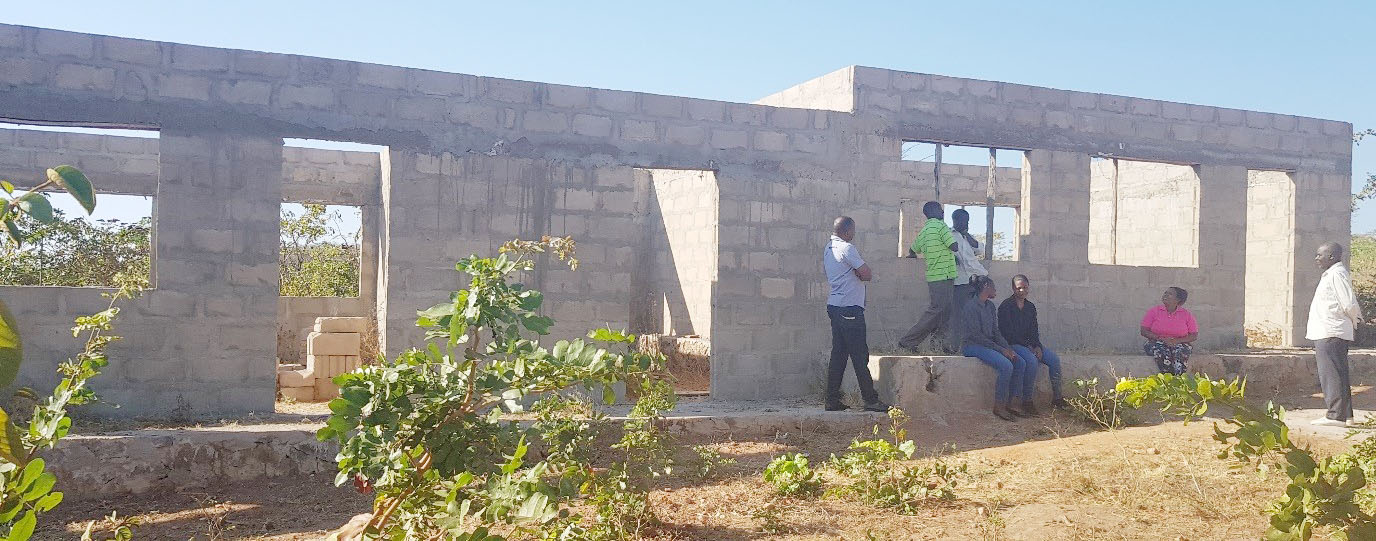

Kerezia Story: The power of participatory action-based dissemination of evidence
Evidence on how a participatory action-based dissemination of research findings can influence change at the grassroots
SNAPSHOT
01. In October 2017, IHI researchers applied a participatory action-based dissemination of research findings model at Kerezia – a rural community in Geita Region, Tanzania.
02. During the action-based dissemination of research findings, lack of nearby school was listed among the priority issues because it forced adolescents into mining.
03. One year down the road, after the participatory action based-dissemination workshop, the Kerezia community is building a new primary school.
Introduction
In 2018, IHI Senior Social Scientist Dr. Sally Mtenga led a team to implement a participatory action-based dissemination of research findings which emerged from the formative study for Children in the Mining (CIM) project under the USAID funded Kizazi Kipya project led by Pact-Tanzania. The project aims to improve access to social-economic and health services for children living in the mining areas in Bukombe, Songwe and Chunya districts. The formative study was conducted by Dr. Emmy Metta, Ramadhani Abdul and Dr. Eveline Geubbels in collaboration with the Pact staff.
Using the participatory action-based dissemination model, Dr. Mtenga and her team provided members of the Kerezia community an opportunity to reflect on the findings and develop a plan of action to address the social-economic problems that face children living in the mining areas and the aspects that encourage them to run into the mining areas. The villagers were guided to prioritize key challenges facing children living in the mining areas as informed by the formative study and prioritize actions and opportunities to address the challenges.
This is what an excited village leader reported to Dr. Mtenga during her visit to the settlement a year after the dissemination: “We remember you as our trainer during the seminar you organized for us last year. You told us to prepare our priorities on solutions that will address the problem of children not going to school but rushing to the mining areas. We had three priorities (water, road, and school).
“We are happy to tell you that one of our priorities has been implemented and through the efforts of community members, we have constructed a foundation for the primary school here in our village [........] because some of the schools here are very far away and sometimes children on their way to school would deviate and go to the mining areas. I was really wondering how I could see you and inform you about this progress. I once asked Yasinta (CMO) how I could reach you [....]. Excitedly, Dr Sally accompanied the village leaders to visit the school structure which was at its initial stage".
Optimism as new school project takes off
After the action-based dissemination in 2017, a 10-men committee was formed to steer a new primary school construction project. During a visit made about a year after the dissemination event, the IHI Communications team saw walls of two classrooms and the office for teachers had already been erected. The next step from there is roofing. Members of this community are now optimistic that, with this commitment and the support from their partners in the development of Kerezia, the future was bright.
The new school is being built on a seven-acre land bought by members of the Kerezia community through contributions and donations. The community’s plan is building a total of nine classrooms – seven for the normal grades, one for aged children who couldn’t join primary school on time due to various reasons, and one for the kindergartens.
Most parents are very much concerned about the risks their children face to follow their studies at Buntubiri - the only nearby primary school in the area. Depending on the location of a particular house at Kerezia, the school is three to seven kilometers away. The new primary school under construction is a clear testimony of how community engagement informed by evidence can influence change at the grassroots.
Small contributions matter
Each member of Kerezia contributed TZS5,000 for the first phase of the project whose target is putting up three rooms – two classrooms and an office for teachers. Small miners operating in the settlement located some ten kilometers from Ushirombo – the Bukombe District headquarters – also contribute to the project, according to the coordinator of mining activities at Kerezia.
People engaged in mining in the area and their partners coming to collect sand with gold concentrates have been cooperative in supporting school construction efforts. Buntubiri Village Executive Officer (VEO) Mr. Yusto Mabuga says plans are underway to sensitize parents with primary school-going children to also contribute for desks.
Take home message
The Kerezia story is a tangible exhibit that scientists need to go beyond the traditional methods of sharing research findings and apply a participatory action-based dissemination where possible to allow in-depth reflection on the research findings and actions that would influence change at the grass roots. Seeing our research contributing to the well-being aspect of the community is a success story to both, the Community, IHI, Pact, funders and other partners.#
